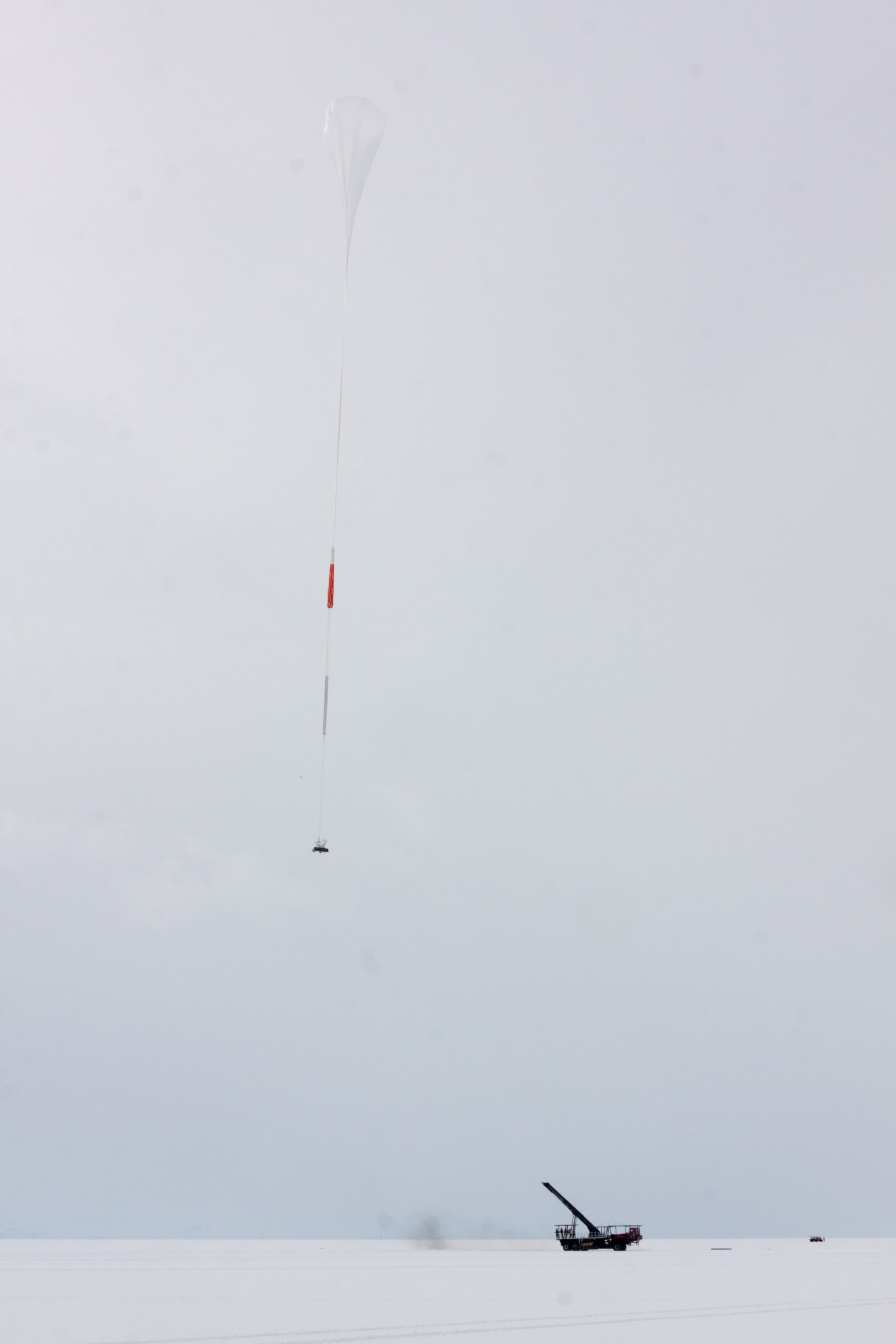
On Jan. 18, 2016, the GRIPS balloon team sent their instrument soaring towards the stratosphere above Antarctica, suspended underneath a helium-filled, football-field sized scientific balloon. GRIPS, short for Gamma-Ray Imager/Polarimeter for Solar flares, is studying extremely high-energy radiation released by solar flares.
Solar flares are created by an explosive realignment of magnetic fields, known generally as magnetic reconnection. When magnetic fields change suddenly strong electric fields are generated that produce a large force on charged particles. In the ionized gas of the sun’s atmosphere, this process sends electrons and ions flying at speeds approaching the speed of light, causing them to release high-energy gamma rays.
“GRIPS sees this emission three times more sharply than any previous instrument,” said Albert Shih, project scientist for the GRIPS mission at NASA’s Goddard Space Flight Center in Greenbelt, Maryland. “We’ll be able to pinpoint more precisely the times and locations that produce gamma rays.”
Antarctic summer is the ideal time for scientific balloon launches, because of the relatively calm skies and — for several weeks — 24/7 sunlight, which provides power and uninterrupted data collection for solar-focused instruments like GRIPS.
The GRIPS team began arriving at McMurdo station in Antarctica in late October 2015. Throughout November, December and early January, the team assembled and tested GRIPS as they waited for the right conditions to launch their balloon. The GRIPS team hopes their balloon will fly for anywhere from 14 to 55 days, carried around the continent by a circular wind pattern that develops over Antarctica each summer.
Scientific balloons are a low-cost way to access Earth’s upper atmosphere up to the edge of space, allowing scientists to make measurements that are impossible from the ground.
GRIPS is led by the University of California at Berkeley by Principal Investigator Pascal Saint-Hilaire. Orbital ATK provides program management, mission planning, engineering services and field operations for NASA’s scientific balloon program. The program is executed from NASA’s Columbia Scientific Balloon Facility in Palestine, Texas. The Columbia team has launched more than 1,700 scientific balloons in over 35 years of operation.
The National Science Foundation’s Division of Polar Programs provides logistics and aircraft support at McMurdo Station, Antarctica.
Sarah Frazier
NASA’s Goddard Space Flight Center, Greenbelt, Md.
Related Links


























